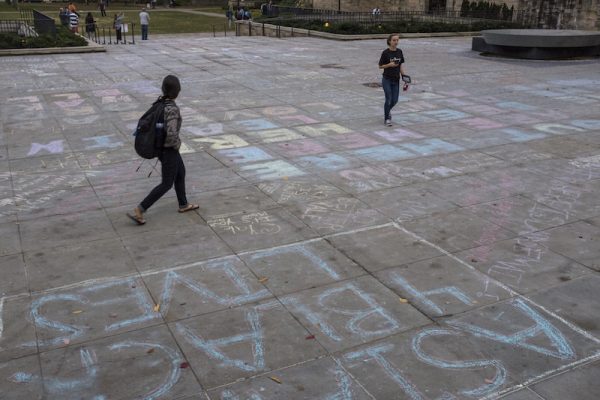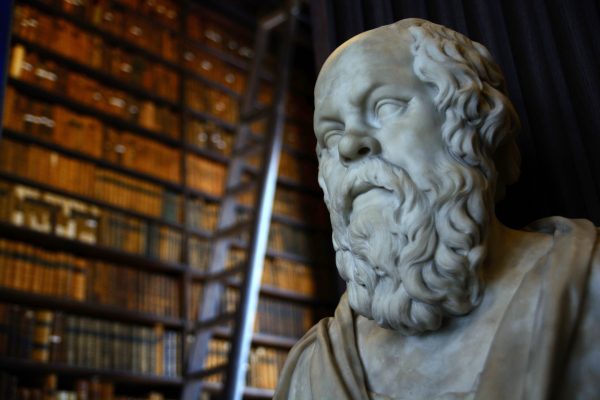Yale is caught between what it should practice and what it must preach.
Reversing DEI

MIT, caught in a bind, reintroduces standardized testing.
We wrote last November that MIT, our alma mater, “has caved repeatedly to the demands of ‘wokeness’, treating its students unfairly, compromising the quality of its staff, and damaging the institution and academic freedom at large.” As has happened across academia, total commitment to DEI—Diversity, Equity, and Inclusion—has become an article of faith, with an aggressive program of minority admissions part of the canon. MIT’s most recent initiative involves new hiring and programs devoted to:
understanding MIT’s Indigenous history and Native issues more broadly. Leadership in the School of Humanities, Arts and Social Sciences (SHASS) and the History Section also helped us realize that it is past time for MIT to feature cutting-edge scholarship and educate our students in this rapidly expanding discipline.
Why MIT— long renowned for its math, science, and engineering education and research, and currently ranked #2 among all U.S. colleges and universities—needs to expand its focus to the “rapidly expanding discipline” of Native American studies is unclear. Among other things, MIT gave us the Mark 14 gunsight used by U.S. Navy ships during WWII, prominent participants in the Manhattan Project that developed the first atomic bombs, strobe photography, and the elucidation of the genetic basis of sickle-cell anemia, so one would think that it could allow other institutions to become leaders in championing politically correct social goals. However, MIT’s soon-to-depart president, L. Rafael Reif, has become DEI-obsessed. A search of the MIT website reveals at least 70 professors and staff directly related to promoting DEI, including six new Assistant Deans for DEI who were hired in a single day.
“Equity,” which is at the heart of DEI, sounds a lot like “equality,” which causes many people to miss the critical difference. Equality means that each person is given equal opportunity, while equity means that outcomes must be equal, without regard for the capabilities or efforts of the individuals concerned. In an email one of us received from an MIT professor, his signature block said “Diversity, Equality, and Inclusion.” When asked whether this was a departure from MIT’s actual DEI wording, he said that he was unaware of the disconnect and would have to think about which he really meant. He needs to think hard, because in current usage they are essentially opposites.
For the last two years—partly due to the pandemic but also to achieve more equity in admissions—MIT dispensed with the requirement that applicants take the standardized SAT or ACT exams. However, without the benefit of applicant screening, many minority students admitted on the basis of grades and recommendations alone were underperforming in their coursework. As a result, MIT recently became the first prominent university to reinstate the requirement that applicants submit SAT or ACT scores.
This reversion to prior practice received pushback. The Washington Post ran an article called “Why MIT is an outlier in reinstating SAT/ACT scores for admissions” that repeated, apparently without any attempt at fact checking, an article by Bob Schaffer, executive director of the National Center for Fair & Open Testing, an activist group which advocates for test reform. According to Schaffer:
In fact, MIT has supplied little data to justify its policy. The school even said that the decision to restore a test submission mandate was not based on the performance of the undergraduates who had been admitted without ACT or SAT scores. Rather, MIT appears to have relied on some unpublished historic correlations. Since the mean SAT math score for MIT students is 790 and well more than half of its applicants posted 800s, it is difficult to figure out how the school might be using test results to cull its applicant pool.
Schaffer appears not to have bothered to read the announcement from MIT. Stuart Schmill, the Dean of Admissions, described the rationale for the decision in a blog post: “Our research shows standardized tests help us better assess the academic preparedness of all applicants, and also help us identify socioeconomically disadvantaged students who lack access to advanced coursework or other enrichment opportunities that would otherwise demonstrate their readiness for MIT.”
He continued, “Our ability to accurately predict student academic success at MIT is significantly improved by considering standardized testing—especially in mathematics.” Thus, “not having SATs/ACT scores to consider tends to raise socioeconomic barriers to demonstrating readiness for our education.”
That is all couched in DEI-speak by Dean Schmill, who is himself an MIT grad, but there’s more to the story. The institution was in a bind. MIT doesn’t have a way to address the problem of minority students who have been promoted beyond their level of competency. If they flunked out, MIT could appear to have created a hostile learning environment in which minority students could not thrive. Therefore, the administration needed to weed out the likely underperformers from the applicant pool before they were admitted.
At many universities, there are well-known “easy” majors, like physical education, sociology, or gender studies, that are not, literally or figuratively, rocket science. So, if students find themselves unable to pass the coursework to major in, say, nuclear engineering or physics, they can move down the academic food chain. But MIT has “General Institute Requirements,” which are extraordinarily rigorous. Every undergraduate— even economics or political science majors—has to take a semester each of chemistry and biology, and two each of physics and calculus.
Both MIT’s analysis and a 2020 study by a University of California task force found that standardized test scores are superior predictors of success for students who are minorities or from low-income families. High school grades are often inflated, and admission application essays can be “coached” or actually written by hired guns. This is the reason that standardized tests were created—to overcome the “big donor” and legacy systems that had prevailed, and to allow applicants to compete on more of a level playing field.
Caught in a bind, MIT administrators have made a brave decision to restore standards and embrace merit. They will surely take heat for their choice, and risk accusations of racism. But elitism—in the sense of “choosiness”—isn’t racist. It’s just how a great school finds the best students.
The American Mind presents a range of perspectives. Views are writers’ own and do not necessarily represent those of The Claremont Institute.
The American Mind is a publication of the Claremont Institute, a non-profit 501(c)(3) organization, dedicated to restoring the principles of the American Founding to their rightful, preeminent authority in our national life. Interested in supporting our work? Gifts to the Claremont Institute are tax-deductible.
an invitation to noncompliance.
Harvard's affirmative action case offers a crucial opening.



